| Topics |
|---|
| Spatial structure in all frames. |
| Spatial structure with colour. |
| Spatial structure variation over time |
| Discussion. |
Spatial Residuals based i-band calibrators
Following on from our g-band g-band and r-band analysis of spatial residuals we undertook the inital steps in the Zubercal process for all ZTF i-band data. First we processed and fit every ZTF-I night with i-band photometry (~450 nights). Then we derived the average residual relative to PS1 at each super-pixel (120 x 120 super-pixels per quadrant). Generally there are ~2,000 measurements per super-pixel at this scale. The results are very similar to average spatial residuals following our prior g-band work with stronger CCD central structures than in r-band.
Blink all: i/g-band ![]() i/r-band
i/r-band![]()
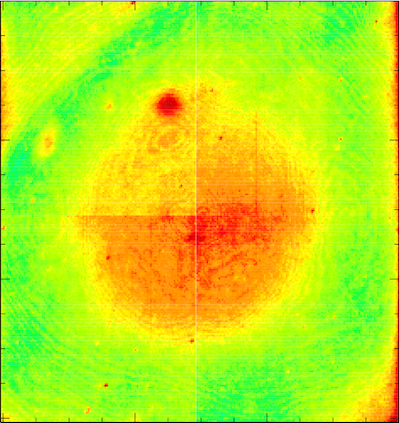
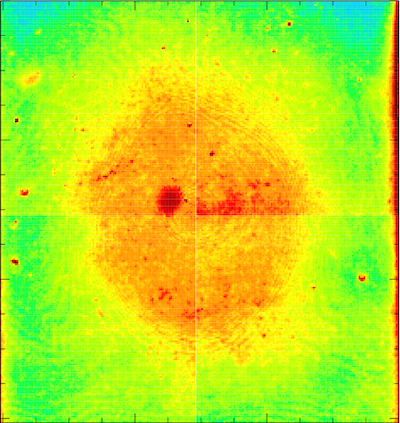
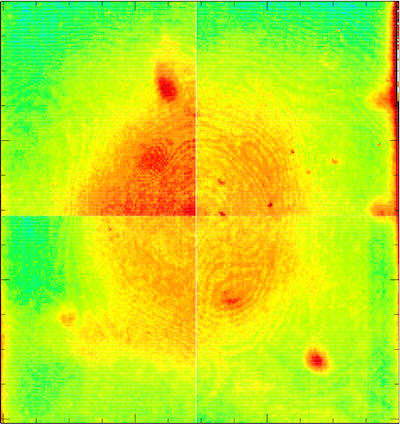
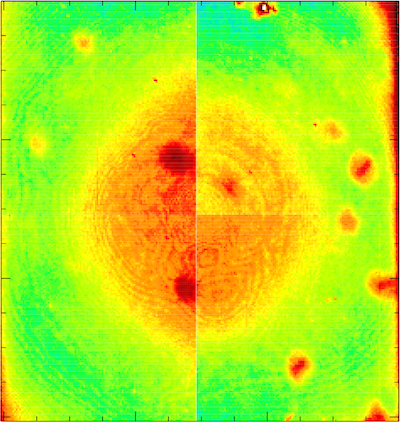
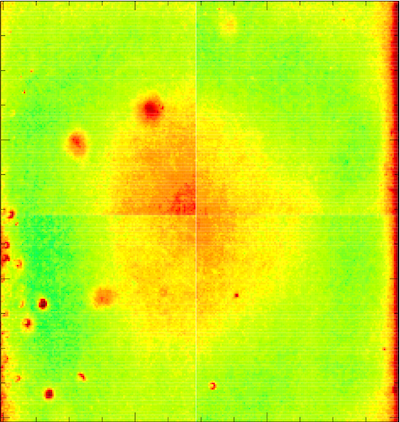
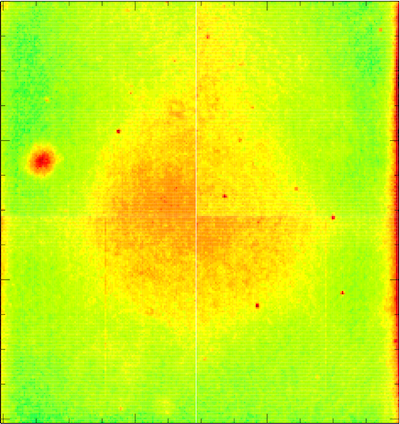
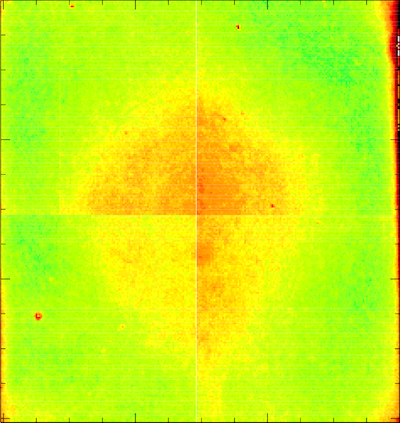
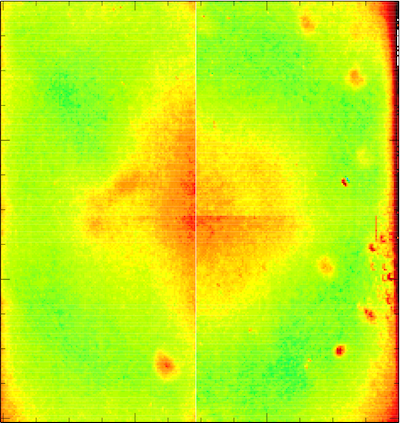
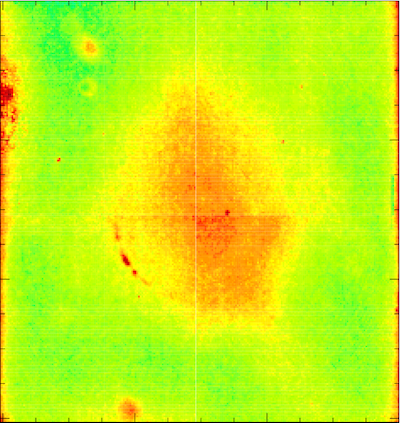

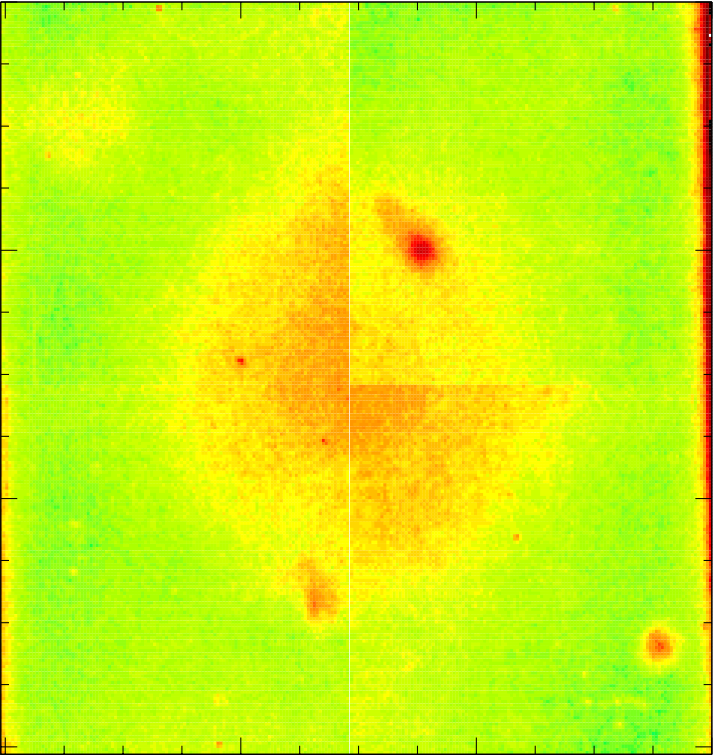
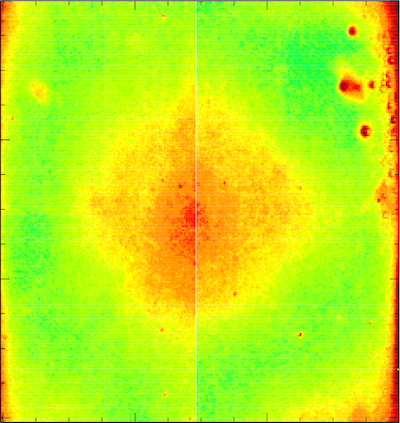

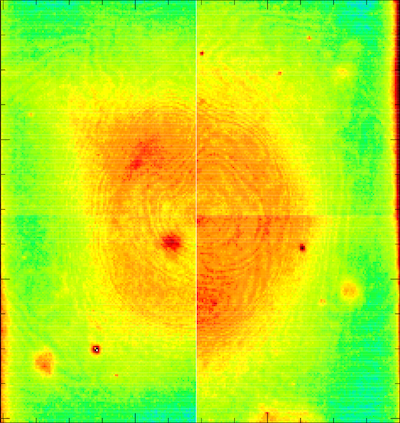
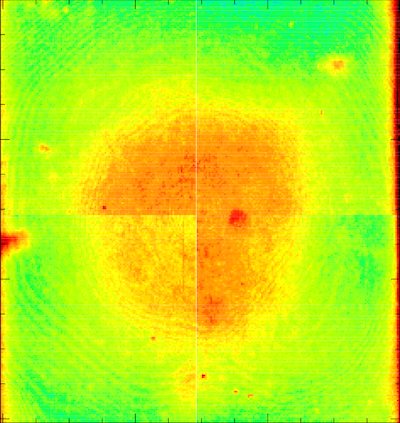

Blink all: i/g-band

Above we show the high resolution i-band residual plots for all 16 CCDs based on all bright calibrator measurements in ZTF-I. Individual CCDs can be blinked for comparison with other band using mouse over. Click for higher resolution versions. In the plots above we contrast photometric error maps derived for each ZTF band (g,r,i) based on bright calibrator measurements in ZTF-I. The new correction plots the appear to be accurate to ~2 mmag based on the level of spatial variation. However, there are variations in the spatial residuals with time that are not corrected by using these maps. The result above can be contrasted with our older residual maps. Some of the i-band residual maps exhibit strong variations between quadrants. These variations are more significant than in g-band or r-band. These are due to variations in gain and gradients across the images.
Unlike the g-band and r-band residual maps we see there are rings in the maps. These rings are due to interence fringes as can be seen in the plot above.
The i-band Colour Dependence of Spatial Residuals for all CCDs
Following our prior analyses of the spatial dependence on source colour, we have determined the i-band residuals for all ZTF CCDs. Unlike our initial g-band analysis, where the colour dependence was determined on the CCD level, we determined to perform fits on superpixels (image binned to 30x30 superpixels per quadrant) since we know that dust spots and edge glints cause significant variations in response. In each case a fifth order polynomial fit appears sufficent.
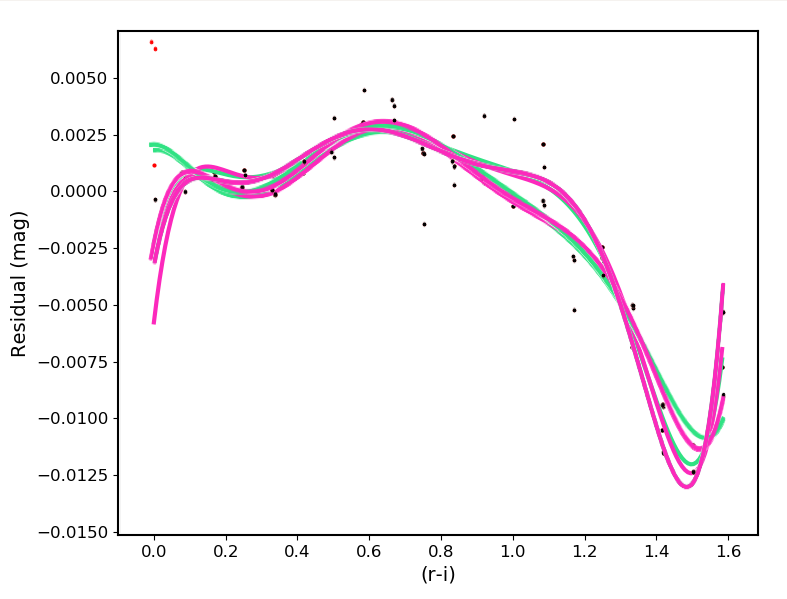
The r-i source colour dependence of residuals (i_PS1 - i_ZTF) relative to the average i-band photometric spatial systematics shown above for CCD 16 quadrant 1. The fit lines above correspond to superpixels at coordinates (10,4), (11,5), (9,5), (9,5), (10,5) of the 30x30 spatially binned images.
In the plots above we show how the photometric residuals vary with source colour from the average based on all i-band photometry. Each superpixel colour point on the plots is the average over all pixels at that position across all fields. The obvious colour dependence is due to a combination of both the CCD and filter response which both vary relative to the PS1 as well as the presence of dust spots.
Here we see that the dependence is similar to r-band but much weaker than in g-band.
I-band photometric residual time dependence
Following on from our analysis of the g-band and r-band time dependence. I have carried fit for the i-band dependence for all 16 CCDs. The fit is performed at the 30x30 super-pixels per quadrant image.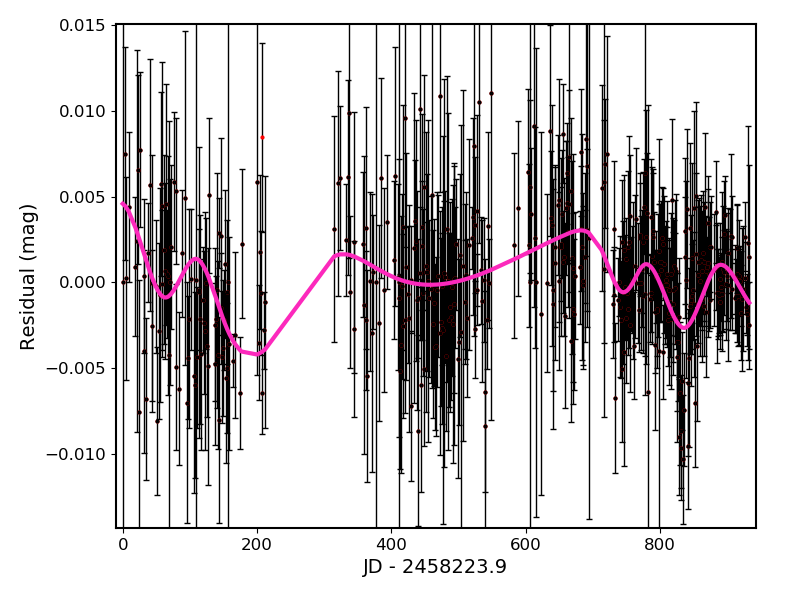
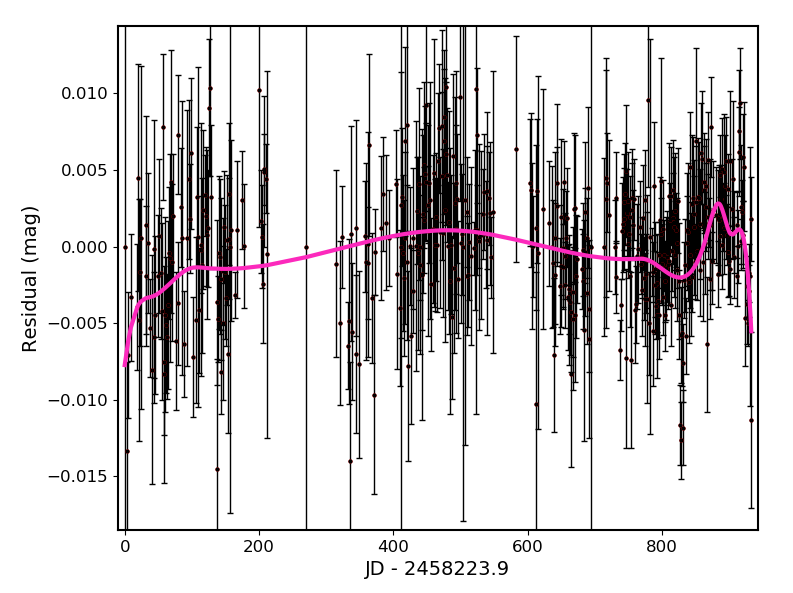

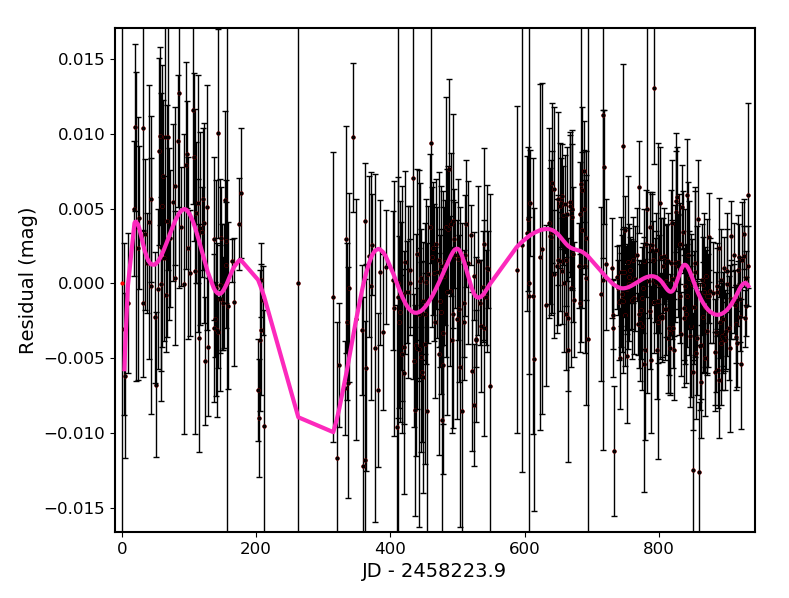
Temporal variations in the CCD-16 photometric residuals of ZTF i-band photometry compared to PS1. Left top: pixel (1,1), right top: pixel (5,5), left bottom: pixel (5,15), right bottom: pixel (25,25). The magenta lines are the fits after an initial 3.5 sigma rejection. The red dots are clipped points.
In the plots above we show the time dependence of the i-band spatial structure at a number of super-pixels across a single quadrant region. As expected, pixels near the edge show the largest variations. Typically these are less than 5 millimags. This significantly smaller than in g-band and r-band.
Discussion
We have completed our determination of the average photometric residuals in all CCD for ZTF-I i-band data. This data is used to match PS1 data and thus provide accurate magnitudes. However, since sources are generally repeatedly observed near the same position in a CCD, these corrections are not expected to greatly reduce the scatter between observations.As with residuals in other bands there are i-band offsets between quadrants of individual CCDs. These variations are due to the data being flatfielded and calibrated at the quadrant level. Vignetting and scattered light creates a gradient within the filtered flatfields that produces an offset along the edges when the images are flattened. Additionally different quadrants have different electronics, leading to different gains. Thus slight errors in slight errors in the linearity and gain can produce offsets. Large offsets between quadrants is clearly seen in the normalized zeropoints. In the residuals maps, the bulk offsets between quadrants (due to gain variations and vignetting) are removed by the zeropoint, but the gradient remains. To quantify the variation we investigated the median residuals in each quadrant. In all cases we found that the offsets between adjacent quadrants to be less than 2 millimags . In most cases the variations are around 1 millimag in i-band (and less in other bands). When the median residual offset between quadrants is removed the maps still do not match prefectly because of the gradients across the quadrants.
We have completed our analysis on trends in residuals with source colour. The i-band variations in response are up to 1% and are thus similar to r-band and smaller than g-band. As the variations are large they must be accounted for within the calibration process. We have provided curves each superpixel (i.e. 900 per quadrant image, 57600 fits over the FoV). These corrections are expected to account for most of variations due to filter transmission, CCD response and environment (dust spots, edge glints, etc.).
We have carried out analysis of the time dependence of ZTF i-band spatial photometric residuals. These appear to be smaller than in either g-band, or r-band. We expect uncertainties at roughly a milli-mag level across most of the CCD away from the edges where glints vary from one night to the next.
Following the results of our r-band analysis, we also redeteremined the colour and time dependence in g-band.